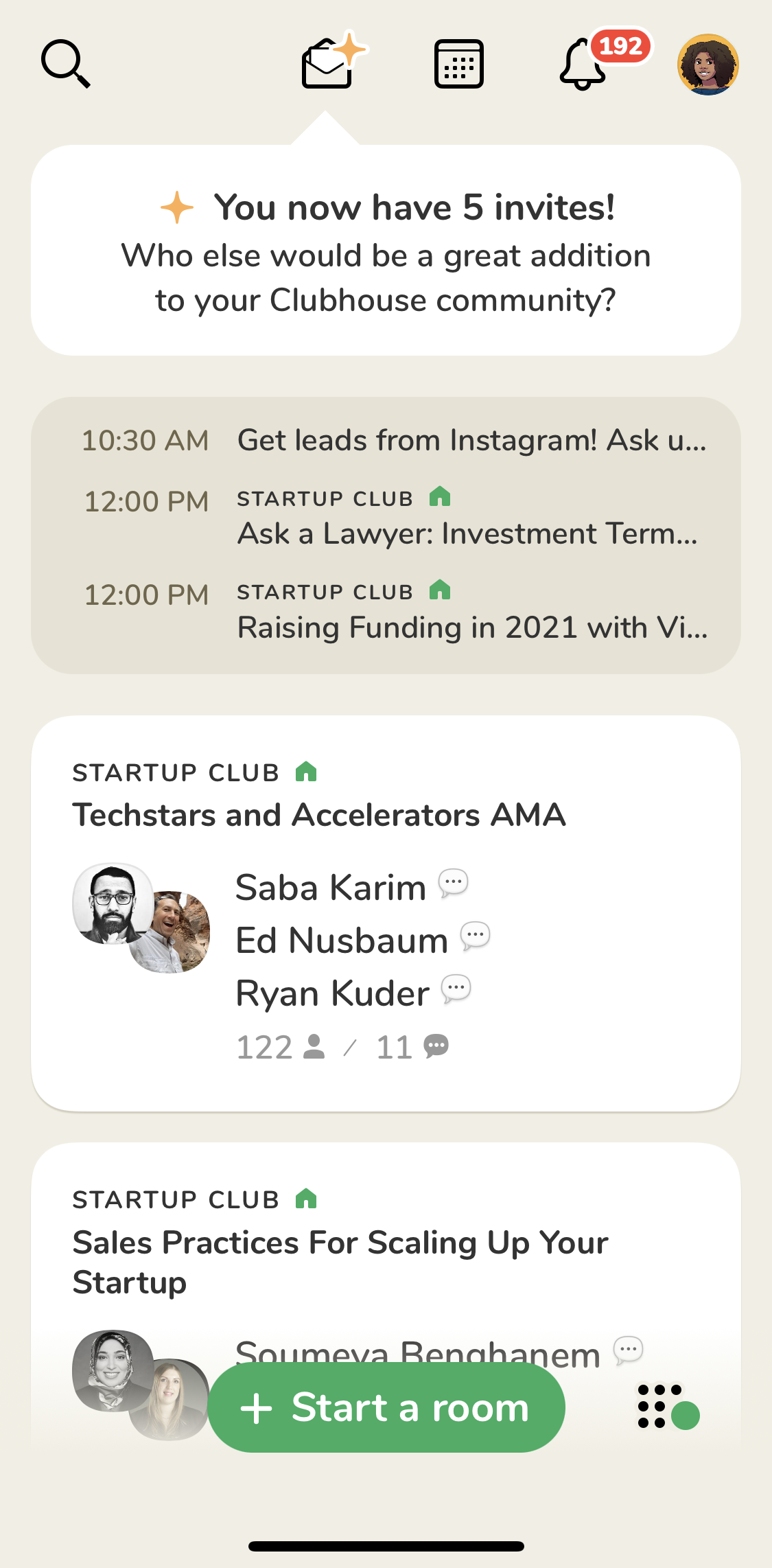4 Tips for Building Your Brand on Clubhouse
There is no doubt by now that you have heard a lot of chatter about Clubhouse, one of the newest social media apps gaining a ton of attention from markers and celebrities alike.
But what is it exactly? And should you spend valuable time and resources building out your brand on the app?
Let’s start with a brief overview of the platform. Clubhouse is an app that launched in May 2020. It can best be thought of as a mixture between Voxer, Twitter, and a splash of LinkedIn. This is due to the main communication method being user voices mixed with the hot takes and general chatter resembling the same conversations one may see on their timelines. As of December, the app has 600,000 registered users.
An home screen example on Clubhouse!
As of January 2020, each user must be invited by someone else in order to join the platform. Once in, users can then spread the wealth by inviting a limited number of users to join.
Once inside the app, users will find a series of rooms that can be hosted by different moderators. These rooms typically align with companies or brands with subject matters that vary from getting starting with stocks to dating in the 21st century.
Just like any other social media app, users can follow one another in order to receive updates and reminders when others are hosting or speaking in rooms.
So by now you are probably asking, “How do I find business success on Clubhouse?” Check out these four easy tips for navigating the app:
1) Be sure to completely fill out your profile
With a name like “Clubhouse”, it is clear that the app gives off an elite “it’s not what you know, it’s who you know” vibe. With the ability to create a lengthy bio, much longer than we see on Twitter or Instagram, users should fully elaborate on who they are, what they do, and what kinds of connections they are trying to make on the app.
The same is true if you are trying to grow a brand presence on the app. Explain what your business is, who your target audience is, and what your followers will get from connecting with your brand.
2) Follow people you do not know
When first joining Clubhouse, users will be asked if they would like to connect their Twitter account so they can easily find familiar people in the app. While it is awesome to connect with those people, it is also beneficial to follow people that are outside of your immediate network in order to expand the clubs and rooms seen inside of the app. Otherwise, it will be very easy to get wrapped up in the exact same conversations with the same individuals from Twitter.
The Creatives Collective club page on Clubhouse.
3) Join clubs and conversations in rooms
Anyone on Clubhouse can start a club page (think a Twitter Profile) related to a certain topic and then host regular, scheduled conversations (think Twitter chats) on different matters involving that topic.
Once users find a club and/or a room that is interesting to them, they should join the room and actively participate. When a user comes across a part of the conversation that is particularly thought-provoking, they should raise their hand in the app in order to contribute. This is key to helping grow an audience as other users will soon begin recognizing the speaking user as someone who provides informational, entertaining, and/or educational content.
If your brand is eager to host rooms, consider starting a club first and get users to follow the club so they are also looped in when rooms are scheduled or beginning!
4) Use your invites carefully!
With a limited number of invites available, be strategic with who gets one! Consider starting with your immediate team and other contacts who will help elevate your brand as well as those who will also help you host rooms on topics related to your brand.
While Clubhouse is all the rage, only time will tell if Clubhouse will stick around or if it will fall by the wayside. For now, the app is only available to iOS users and the limited number of invites per person stipulation significantly limits the number of people who can join and participate in conversations.
It is also important to note that Spaces, Twitter's Clubhouse competitor, is currently being tested and is expected to officially launch at some point this year. Only time will tell if their version will be enough to take users off of Clubhouse and keep them on Twitter, where a majority of conversations about content inside of Clubhouse rooms is already happening.
What do you think about Clubhouse? Will your brand give it a chance? Let us know below in the comments!

